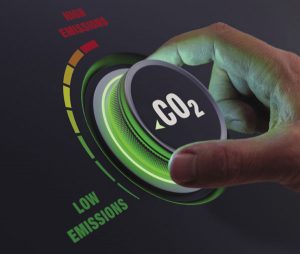WHY THE FOCUS ON SCOPE 3 EMISSIONS?
The latest benchmark findings by the SFMI suggests that despite growing interest in meeting net zero carbon targets, between 80 and 92 per cent of scope 3 emissions within FM are being missed. To address this, the SFMI and BAM will seek assistance from the FM value chain to help identify the areas where it can measure Scope 3 emissions from within the FM sector and services. This will help FMs to make more informed decisions about procurement and operations, based on their carbon impact.
Says Chris Havers, SFMI’s Programme Director: “If we look at direct and indirect emissions [Scope 1 & 2 see box on page 2] most companies know what they own and operate. For instance, electricity and gas is calculated from meters and billing information, likewise carbon from their fleet of vehicles from fuel consumption.
“But capturing Scope 3, emissions which are all the things that indirectly happen in order for the business to operate, is a huge task. As a result, companies find themselves spending a lot of money to collect data and this situation is made more complicated when FMs deliver services for other organisations, blurring the boundaries as to who the emissions belong to. Some will shy away from tackling the problem due to the complexity. This latter approach means that FM isn’t truly engaging the client with a measured decarbonisation that can be applied to the customer.”
To help resolve these issues, the SFMI and BAM FM project will set a standard for the industry that will give FMs a rulebook for categorising and measuring the emissions of the services that they deliver, which is based on recognised emissions accounting processes.
DEVELOPING THE STANDARDS
The partnership between BAM and the SFMI will deliver two key public reports that will set the vision, rules and boundaries for the measurement of carbon within FM services. The reports will deliver one standard split into two. The first report will be a technical document showing how boundaries can be clearly defined when it comes to emissions that result from FM services. This covers three key areas of emissions:
- Those where FMs can take ownership
- Those where FMs can take responsibility
- Those that FMs can influence
The second report will be focused on the categorisation process. This includes how you can begin to identity the categories of Scope 3 emissions generated by FM services and the impact these can have on decarbonisation.
“Both reports will be peer reviewed to ensure our approach will have industry wide acceptance”, explains Havers. “We’ve already got some industry bodies who have agreed to be critical reviewers: the RICS, UKGBC, IEMA, IWFM and ACE. We’re also going to conduct interviews with the BAM procurement team and contract managers. This will help us obtain information from the coalface on who has responsibility on the different types of services within contracts. A handful of  other FM providers have also agreed to set up some consultations to ensure we capture a breath of services. We’ll reconvene in a workshop in mid-October and publish the first report in time for COP 26.”
other FM providers have also agreed to set up some consultations to ensure we capture a breath of services. We’ll reconvene in a workshop in mid-October and publish the first report in time for COP 26.”
One of the main drivers for undertaking this project is to help FM customers. FM suppliers deliver such a vast range of services, there is huge scope for them to make a difference by reducing the carbon emissions produced in their activities, but to realise this opportunity contracts must give FMs the scope to act.
Says Havers: “Ultimately FM suppliers can only do something if a contract enables them to do so. We hope our project will increase the number of contracts, where FM can take responsibility for Scope 3 emissions, as it will provide clients with the confidence that emissions are being identified and measured in a standard and recognised way. Leading to a change in procurement processes for FM services, including greater innovation in FM contracts and a rise in requests for carbon reduction pathways.
As Heaton concludes: “COP26 should be a reminder to us all that everyone needs to do their bit to tackle climate change. Our project, will help FMs understand the role they can play on daily basis to reduce carbon on their contracts.”
Scope 1 emissions – direct emissions from owned or controlled sources such as fleet vehicles, gas and diesel consumption and refrigerant gas leakage.
Scope 2 emissions – indirect emissions from the generation of purchased energy and will include primarily electricity, including from certified renewable sources.
Scope 3 emissions – all other indirect emissions that occur in a company’s value chain particularly operations and services on client sites.
There are 4 key maturity levels for reporting emissions:
- Reporting just scope 1 & 2 emissions
- Reporting scope 1-3 emissions, scope 3 does not include the supply chain
- Reporting scope 1-3 emissions, scope 3 includes the supply chain
- Reporting on emissions attributed to FM services as a decarbonisation pathway





